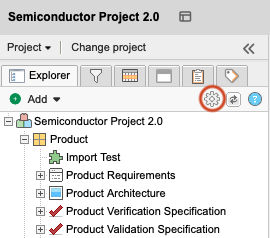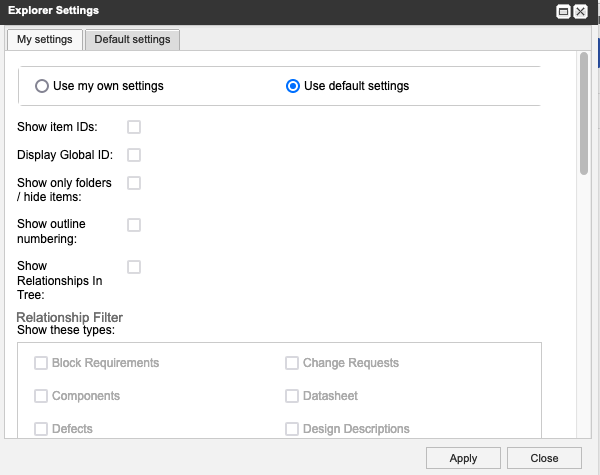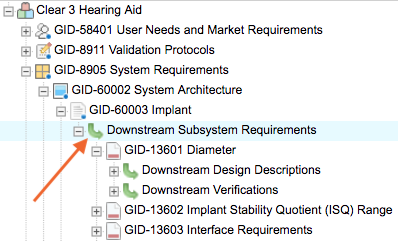Customize the Explorer Tree
The Explorer Tree organizes the sets, components, folders and items in your project hierarchy. You can configure the Explorer Tree settings so that it displays only information that's useful to you.
To customize Explorer Tree settings:
Select the gear icon at the top of the Explorer Tree to open the Explorer Settings window.

In the My settings tab, select the settings you want:

Use my own settings — Overrides the default Explorer Tree settings with your personal settings.
Use default settings — Returns the Explorer Tree to default settings. An organization or project admin can configure default Explorer Tree settings.
Show item IDs — Displays the unique ID (as in PROJ-REQ-25) before each item.
Display global ID — Displays the global ID (as in GID-8845) before each item. This can be helpful if the item is copied and synchronized.
Show only folders / hide items — Hides items from view in the Explorer Tree. Components, set, and folders are still displayed.
Tip
If your project has a large number of items, use this setting to improve performance by limiting your tree to display only as far as folders. You then interact with items only in List View or Doc View.
Show outline numbering — Displays a number scheme of order and depth in the Explorer Tree. Root level items have numbers like 1, 2, or 3. Child items contain the parent item number as well as its own number, as in 1.1, 1.2, or 1.1.5.
Show relationships in Explorer Tree — Displays downstream relationships of items in the Explorer Tree. Select the green downstream arrow to open related items in List View.

Important
Be careful not to relate an item back to itself, which can create an infinite loop that causes the Explorer Tree to expand.
Select Apply.
When you're satisfied with your changes, select Close.
The Explorer Tree now reflects the settings you chose.